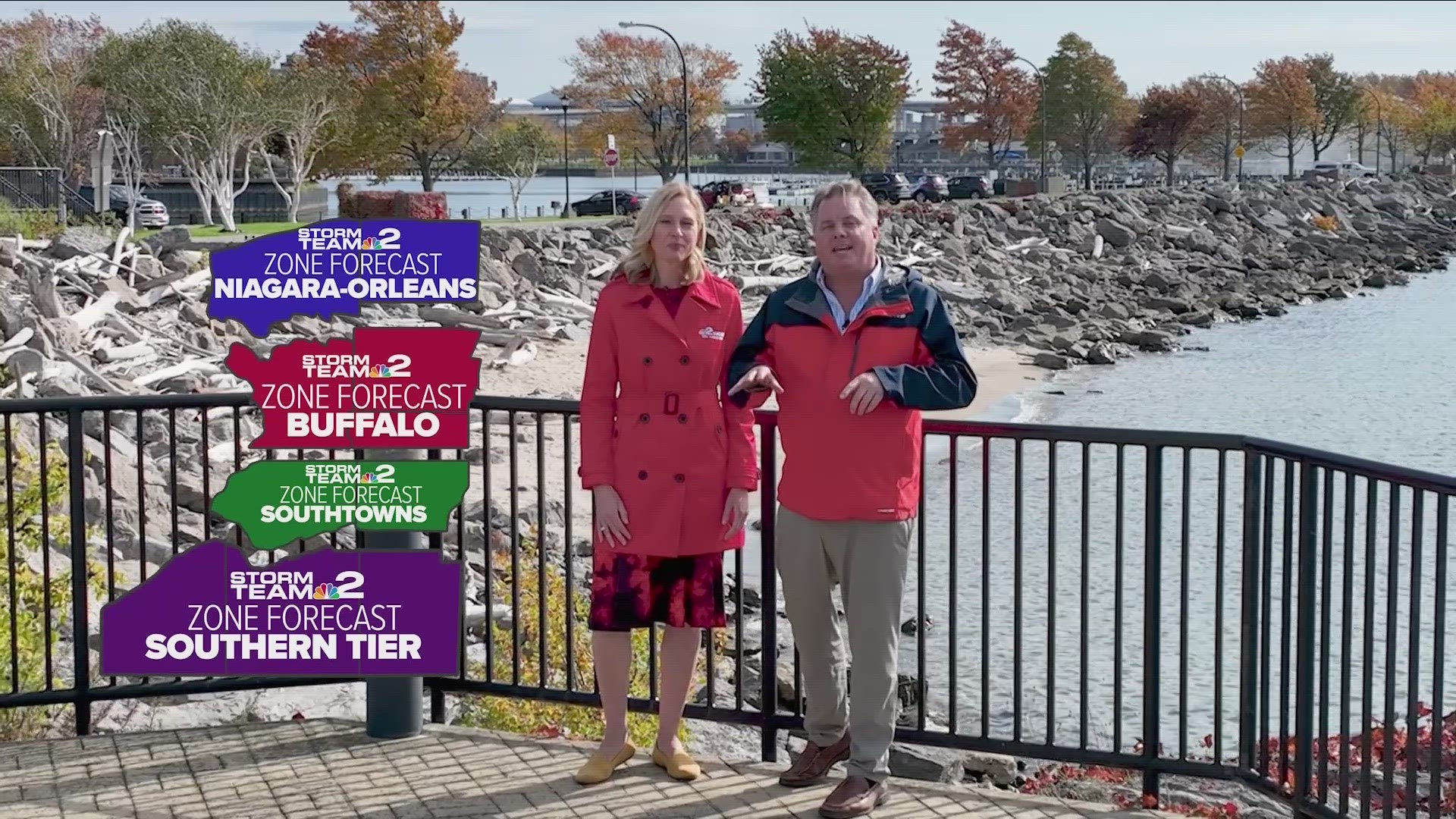BUFFALO, N.Y. — This winter season will be a bit different than last year, with above average temperatures and below normal seasonal snow totals. However, there could still be rounds of decent snowfall.
To start, we need to think big. One of the main driving factors is a phenomenon we've talked about for many years in the past is El Niño and La Niña. Last year the oceans in the tropical Pacific were cool, which is a La Niña.
This year it's the opposite. We have an El Niño, and it could be a strong one.
In a typical moderate to strong El Niño, there are certain things across the United States you can expect during the winter. The Pacific Northwest tends to be dry, Southern California all the way to the south eastern U.S. and eastern seaboard is cool and wet, the northern plains and upper Midwest tend to be warm, and the Great Lakes a bit drier.
This winter is expected to have a strong El Niño setting up with the temperatures usually warmer and less than normal snowfall during the winter months locally. This last happened in the winter of 2015-2016, the last strong El Niño. That year had a record-breaking latest first measurable snowfall recorded on Dec. 18, shattering the previous record by more than two weeks.
Usually we see the below average winter snowfall pretty much any time there has been a strong El Niño, also there is more variability month to month and usually a shorter snow season with the snowfall not as spread out over the ENTIRE winter.
However, this El Niño may be a bit different. There are some other things going on in the Pacific Ocean that could lead to a possible colder and snowier scenario versus a typical El Niño.
Also, the record warm global ocean water temperatures, including in late July when the water in the Florida Keys hit 101 degrees for the first time ever in the world's oceans.
Another feature typical of an El Niño winter season is a very active storm track up the East Coast that could produce rain and snows coming from larger storms that may blanket areas that saw very little snow last year. These larger storms could impact Western New York as well.
So it is possible if this winter is a little milder than normal, more of our snows would come from these larger storms moving up the East Coast, with potentially smaller amounts of snow coming from Lake effect.
BUT, lake effect snows will certainly happen. However, it may not account for the MAJORITY of the snow that we get, like last winter. Remember this, though, a milder winter USUALLY keeps ice cover minimal on Lake Erie, and you know what that means, still some decent lake effect snow events that can dump feet of snow.
And with a warmer lake during strong El Nino years, like this coming year, and with the current warmer Lake Erie water temperature, all we need is a good blast of arctic air and we can easily get a lot of snow. And note that Lake Erie had record warm water temperatures for end of September and for many days to start October this year.
So let's take a look at our zones and predict how much SNOW we think is going to fall this winter. We will start off in our Buffalo zone. Based on the strong El Niño expected we believe snowfall will be a little below normal and temperatures trending a little above normal. However, that does not mean we are not going to see some healthy snowfall events for the Buffalo zone. We are calling for around 75 inches of snowfall for the winter season. The average is 94 inches.
For our Northern zone, where snowfall is usually LESS compared to other areas of Western New York, we are expecting there will be a drop in the snow totals. However, winter snowfall here looks to be closer to average. While there will be fewer lake effect snow events that make it into this zone, look for potentially more widespread snows totals, in the 40 to 50 inch range.
The place that looks to get the most snow is the Southtowns and into the Southern Tier. Snowfall totals for the Southtowns will be lower than last year though. And with slightly below average totals near the Lakeshore, predicting close to 80 inches of snow closer to Lake Erie.
However, inland in the hills could see upwards of 120 inches of snow for the winter totals there.
And finally, as for the Southern Tier, snowfall totals will be below normal, perhaps by the greatest margin in the area with fewer lake effect events however, larger scale snows will still bring 120 to 180 inches of snow in the snowiest spots.
This winter looks to be interesting, but still probably not as much snow as we usually expect and not as brutally cold.
RELATED VIDEO:

